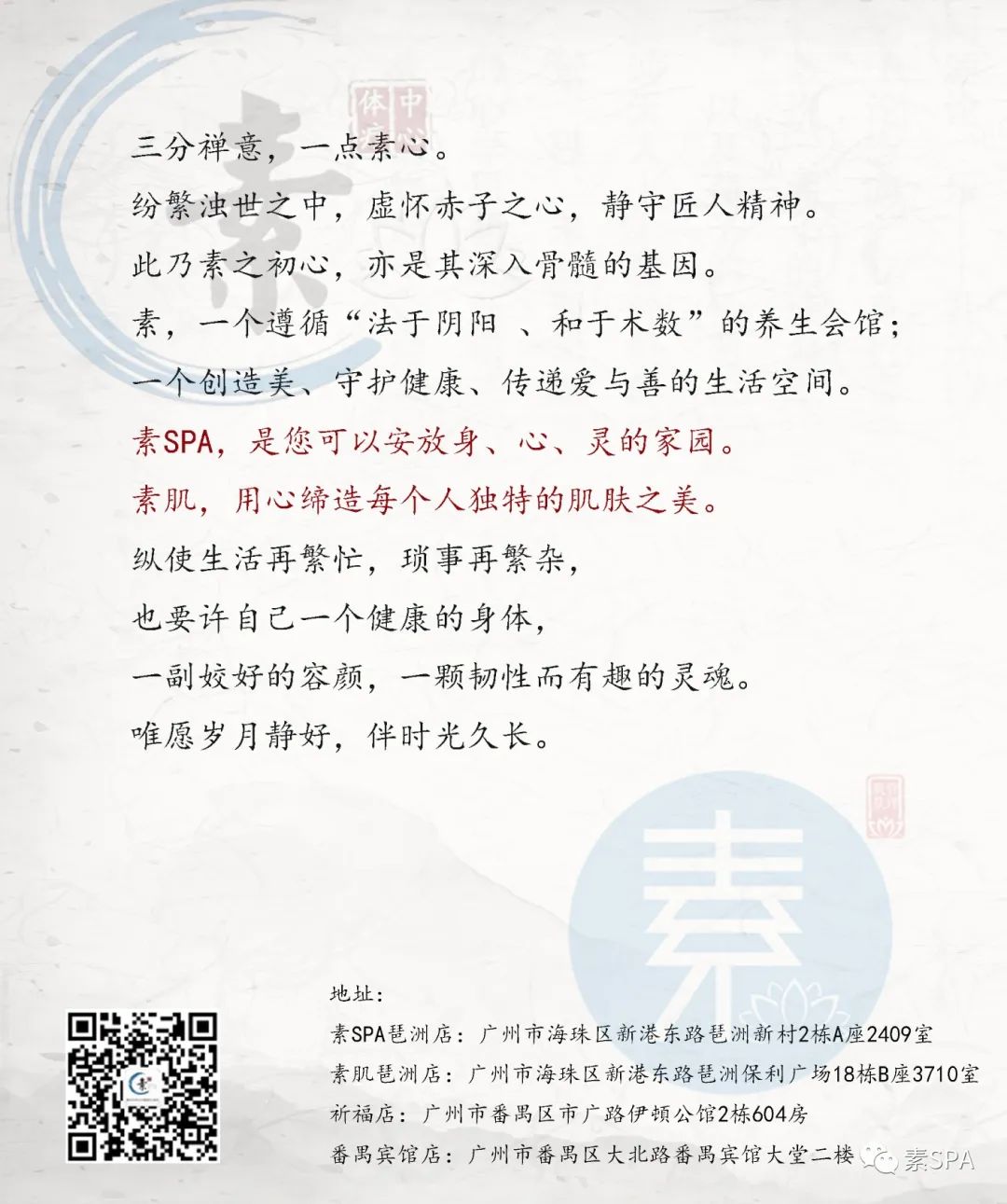

In Traditional Chinese Medicine (TCM), wind, cold, heat, dampness, dryness, and fire are considered the six climatic changes in nature, referred to as Liù Qì.
The movement and transformation of these six climatic factors are known as the six transformations, which determine the seasonal climate changes: spring wind, summer heat (fire), autumn dryness, winter cold, and the long summer dampness.
The human body has a certain adaptability to these six climatic factors through its own regulation, generally preventing illness. However, when climatic changes are abnormal and exceed certain limits, such as excessive or insufficient presence of these factors, or rapid climatic changes, the body may become susceptible to external pathogens, leading to illness.
When the body’s righteous qi is insufficient and resistance decreases, the wind, cold, heat, dampness, dryness, and fire can invade, causing illness. In this context, the six transformations are referred to as Liù Yín.
This article discusses the Dryness Pathogen.
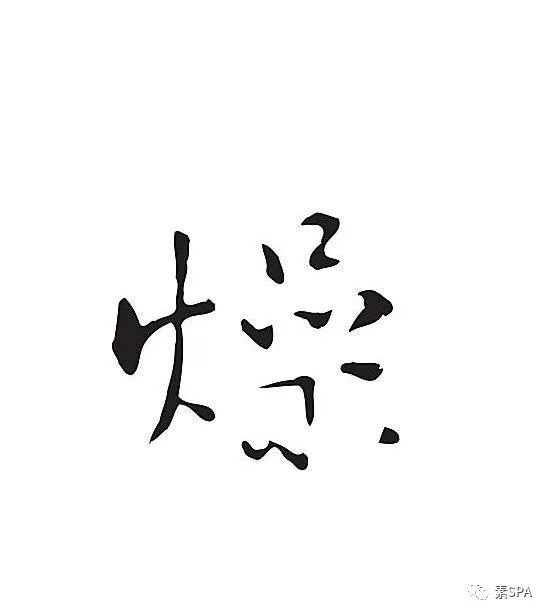
Dryness is the primary qi of autumn.
During autumn, the weather becomes crisp and dry, presenting a scene of desolation in nature. The dryness pathogen often enters through the mouth and nose, primarily affecting the lungs.
The Huangdi Neijing states: “Excessive dryness leads to desiccation.”
Qing dynasty physician Yu Jiayan supplemented the “Nineteen Pathogenic Mechanisms” by stating, “All dryness and desiccation belong to dryness.”
The pathogenic characteristics of the dryness pathogen are primarily its dry and astringent nature, which easily damages the body’s fluids. Additionally, autumn is associated with the lungs, which are connected to the mouth and nose, favoring moisture and disliking dryness; thus, the dryness pathogen most easily injures the lungs.
As a disease, the dryness pathogen can be classified into warm dryness and cool dryness based on its combination with cold and heat pathogens. Early autumn has residual summer heat, and the autumn sun can combine with dryness and heat to invade the body, leading to warm dryness; late autumn, approaching winter, sees the west wind’s desolation, where dryness combines with cold to invade the body, leading to cool dryness.
Understanding the Dryness Pathogen
As one of the six evils, the dryness pathogen arises in autumn, which is situated between the hot summer and cold winter. Therefore, the dryness pathogen can combine with warm or cool evils depending on the time, leading to distinctions between “warm dryness” and “cool dryness.”
The dryness pathogen can be classified into warm dryness and cool dryness based on its combination with cold and heat pathogens.
In early autumn, the heat has not dissipated, and warmth still lingers; thus, the dryness pathogen combines with warm heat, presenting as warm dryness.
As late autumn approaches winter, cold air gradually rises, and the dryness pathogen combines with cold, presenting as cool dryness.
Warm Dryness
Warm dryness, due to its combination with warm heat, causes more damage to the body’s fluids. Once it invades the body, clinical manifestations include dryness of the mouth and nose, dry cough with little phlegm, reversed qi leading to wheezing, dry throat with a desire to drink, and skin that is not nourished, indicating insufficient yin fluids. It can even harm the blood vessels, leading to coughing blood and limb weakness.
Cool Dryness
Cool dryness, when combined with cold, often presents with symptoms such as headache, chills without sweating, similar to wind-cold attacking the lungs, but to a lesser degree than cold pathogens. Therefore, it is said that “dryness is a lesser cold”. When cool dryness invades, its impact on fluids may not be direct depletion but rather manifests as the characteristics of dryness gathering and descending, affecting the distribution of fluids, with clinical symptoms primarily including cough with thin phlegm, nasal congestion, dry throat, and a lack of desire to drink.

Characteristics of the Dryness Pathogen
1
Dryness is astringent and easily harms fluids
Dry, dry;
Astringent, stagnant.
The dryness pathogen is inherently dry and, when it invades the body, it most easily damages the body’s fluids, leading to various symptoms of dryness and stagnation. Symptoms include dry mouth and lips, dry nasal passages, dry skin even leading to cracking, dry and unmoistened urine, and hard stools.
Thus, the Su Wen: Yin Yang Ying Xiang Da Lun states: “Excessive dryness leads to desiccation.”
2
Dryness easily harms the lungs
The lungs are delicate organs, favoring clarity and moisture while disliking dryness.
The lungs open to the nose and harmonize with the skin; thus, the dryness pathogen often enters through the mouth and nose, making it most likely to harm the lungs and deplete lung fluids.
The dryness pathogen troubles the lungs, damaging lung yin, disrupting its function of dispersing and descending, and can severely harm the lung vessels, leading to dry cough with little phlegm, or sticky phlegm that is difficult to cough up, dry and painful throat, wheezing with chest pain, and blood-streaked phlegm, with a red tongue and little fluid.
Since the lungs and large intestine are interrelated, the dryness pathogen affecting the lungs can also lead to symptoms of dry and difficult bowel movements.
External Dryness & Internal Dryness
The previously mentioned warm dryness and cool dryness refer to the nature of external dryness, which can be classified into external dryness and internal dryness.
External dryness refers to the harm caused by the six evils of dryness, primarily entering through the mouth and nose, with the disease manifesting in the lungs. Internal dryness refers to dryness symptoms arising from the depletion of yin fluids.
External
Dryness
Dryness is the primary qi of autumn; thus, external dryness is commonly referred to as “autumn dryness.”
Any pathogenic factor with dry, astringent, and cleansing characteristics is termed a dryness pathogen. When the external dryness pathogen invades, it is referred to as an external dryness disease.
In TCM, external dryness can be understood in two layers: one refers to the invasion of the six evils of dryness, and the other refers to dryness diseases caused by the harm of dryness.
The Yimen Falü states: “Autumn is harmed by dryness.”
Although external dryness is commonly seen in autumn, it can also occur at other times.
The Su Wen: Yin Yang Ying Xiang Da Lun states: “The weather connects to the lungs.” When the external dryness is excessive, it most easily enters the lungs, leading to lung dryness.
The Jingyue Quanshu states: “If autumn is too excessive, the metal qi is strong, and the wind follows, then the lungs will first suffer from illness.”
Thus, when external dryness causes illness, lung-related symptoms are the first to appear.
Without moisture, there is dryness; dryness is a symptom of lack of fluids.
The dryness pathogen must harm fluids, subsequently depleting yin blood.
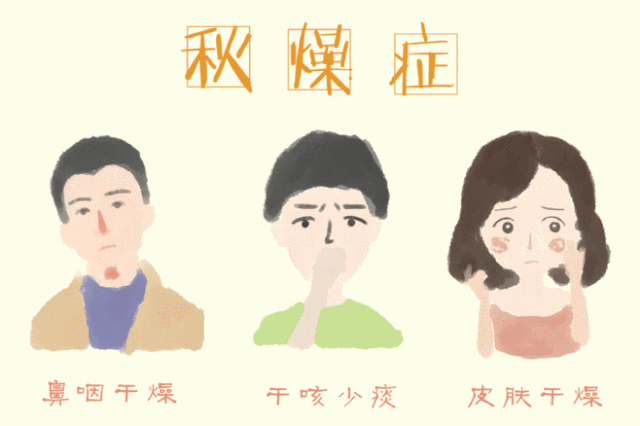
From the perspective of the organs, the dryness pathogen first scorches lung fluids, leading to lung dryness; next, it scorches stomach fluids, resulting in stomach dryness; the depletion of lung and stomach fluids can also affect the lower jiao, liver, and kidneys, leading to depletion of fluids and blood, resulting in insufficient liver yin and dry kidney yin.
The Yimen Falü states: “The classics say: Excessive dryness leads to desiccation. The harm of desiccation is not merely a surface issue. There is external dryness leading to wrinkled skin, and internal dryness leading to depleted essence and blood. There is dryness of fluids leading to weakened qi and blood, leading to various diseases. The areas affected by dryness can be extensive. When dryness harms metal, it can damage wood, and in severe cases, it can harm the lungs.”
Internal
Dryness
Internal dryness arises from the depletion of yin blood and fluids.
Although internal dryness is one of the five internal evils, its key factor is a pathological change caused by other factors. Internal dryness often occurs in the later stages of heat diseases or due to excessive vomiting, diarrhea, sweating, or bleeding, which depletes fluids and yin blood.
Therefore, the disease caused by internal dryness is also referred to as “fluid depletion leading to dryness disease.” At this time, due to insufficient internal yin fluids and blood, the organs and skin cannot be nourished, leading to pathological changes of dryness and desiccation in the organs and skin. Common symptoms include dry mouth and nose, dry throat with thirst, dry tongue without fluids, unmoistened hair, dry skin even leading to cracking, short and scanty urine, and hard stools.
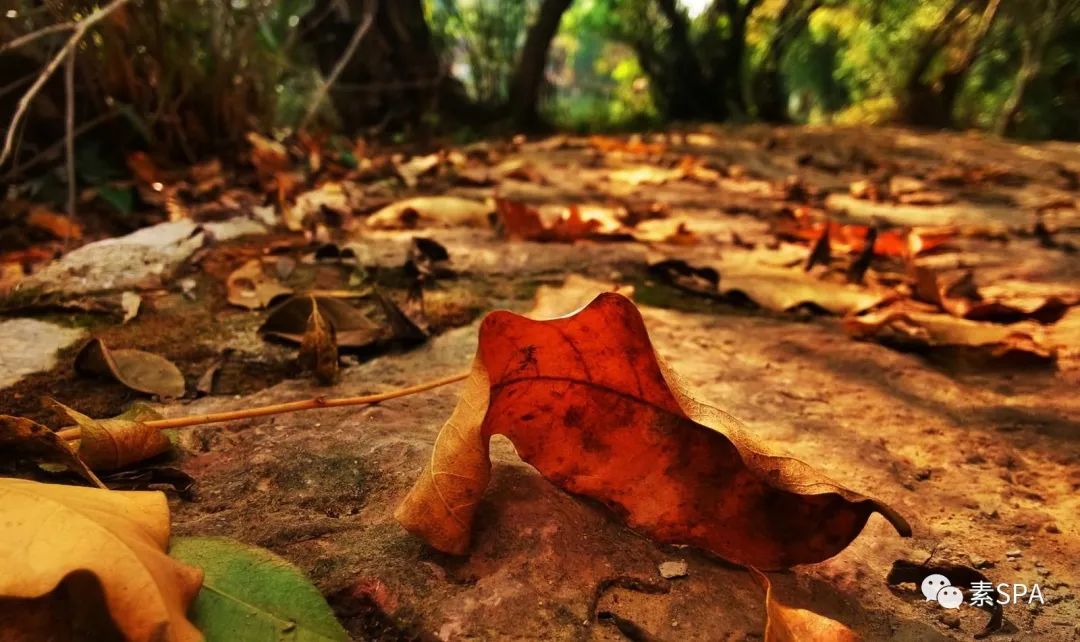
The pathological characteristics of internal dryness include the following:
The basic pathological change is the deficiency of fluids. The body’s yin fluids mainly consist of three categories: fluids, blood, and essence. Among these, fluids are the most abundant and thus most easily damaged. Excessive sweating, vomiting, or diarrhea primarily depletes fluids, leading to clinical manifestations of internal dryness being predominantly fluid deficiency.
Lung dryness and fluid deficiency syndrome: Dryness harms lung fluids, leading to fluid deficiency, resulting in lung dryness and lack of moisture, dry cough with reversed qi, little sticky phlegm, dry mouth and throat, heat in the palms and soles, dry tongue with little fluid, and thin and astringent pulse.
Stomach yin deficiency syndrome: The stomach loses its ability to moisten and descend, leading to dry retching, a lack of appetite, dry mouth and throat, constipation, red tongue with little coating, and thin rapid pulse.
Fluid depletion and intestinal dryness syndrome: Insufficient fluids lead to the large intestine losing its ability to nourish and descend, resulting in stagnation and constipation, with symptoms of hard and dry stools, and difficulty in bowel movements.
Yin blood deficiency syndrome: This is a result of fluid deficiency. Blood is the essence of the body’s yin fluids, originating from food and water, and fluids nourish each other; hence the saying “fluids and blood share the same source”. Yin essence is the most minimal of the yin fluids, stored in the five organs, primarily in the kidneys. Therefore, when the internal dryness disease leads to severe fluid depletion, it inevitably results in yin damage and blood dryness. At this point, the comprehensive depletion of yin fluids can also lead to internal heat, yin deficiency with yang excess, and blood dryness leading to wind. The Jingyue Quanshu states: “Excessive dryness leads to yin deficiency; yin deficiency leads to blood deficiency. This can lead to pulling, stiffness, skin wind, or organ and tissue dryness. This dryness transforms into yang, leading to insufficient nourishment and internal damage…”
Yin deficiency and lung dryness syndrome: Insufficient lung yin leads to internal dryness, often scorching the liver and kidneys, and can lead to dryness transforming into heat. Symptoms include severe dry cough, little phlegm, blood-streaked phlegm, dry and painful throat, heat in the palms and soles, night sweats, red tongue with little coating, and thin rapid pulse.
Yin deficiency and blood dryness syndrome: Commonly seen in chronic or severe illnesses, or in elderly individuals with weakened vitality, leading to yin deficiency and blood damage, resulting in dry and cracked skin, or intolerable itching, hair loss, weight loss, heat in the palms and soles, night sweats, and constipation.
Internal dryness is classified as deficiency. Internal dryness is fundamentally characterized by the deficiency of yin blood and fluids, thus its pathological nature is deficiency. If only fluids are harmed, the disease is located in the spleen and stomach, which is relatively mild; however, if it further harms yin blood, the disease involves the liver and kidneys, leading to a more severe condition and deeper disease location, making treatment not easily achievable in a short time. Therefore, the treatment of internal dryness diseases focuses on nourishing yin blood, generating fluids, and moistening dryness, while also addressing the specific location of the disease, whether it be nourishing the lungs and stomach or nourishing the kidneys and replenishing essence.
Transformations of Internal Dryness Often Involve Phlegm and Dampness. Phlegm and dampness can also lead to dryness. Excessive dampness can obstruct yang qi, hinder the flow of qi, prevent qi from transforming into fluids, and lead to fluid damage and insufficient distribution, resulting in dryness in the organs and skin. For example, phlegm and dampness obstructing the stomach and intestines can hinder qi flow, leading to dry mouth and tongue, but without a desire to drink. Dampness obstructing the large intestine can lead to irregular bowel movements, as stated in the Wen Bing Tiao Bian: “Excessive dampness leads to confusion, hard abdomen, and constipation.”
Preventing and Treating the Dryness Pathogen
AUT
Nourishing Yin and Moistening the Lungs, Promoting Qi Flow
In TCM, the principles for nurturing against the dryness pathogen affecting the lungs are twofold:
The first is “moistening”, which involves replenishing fluids, nourishing yin, and moistening the lungs. Common herbs include Sha Shen (Glehnia), Mai Dong (Ophiopogon), Tian Dong (Asparagus), and pear skin.
The second is “promoting”, which involves promoting qi flow and dispersing pathogenic factors. Common herbs include Su Ye (Perilla), Sang Ye (Mulberry Leaf), Jie Geng (Platycodon), Zhi Ke (Bitter Orange), and Qian Hu (Peucedanum). Additionally, they are often combined with Chen Pi (Tangerine Peel) and Xing Ren (Apricot Kernel) to stop cough and resolve phlegm. For example, in the treatment of initial warm dryness invasion, the main herb Sang Ye in Sang Xing Tang (Mulberry and Apricot Decoction) can both disperse wind-heat and generate fluids to quench thirst, while also adding pear skin and Sha Shen to clear and moisten the lungs; Dou Chi (Fermented Soybean) and Zhi Zi (Gardenia) enhance the dispersing and heat-clearing effects, along with Xing Ren and Xiang Bei (Conch) to stop cough and resolve phlegm, collectively achieving the effects of clearing dryness and moistening the lungs.
If viewed from a preventive perspective, as autumn approaches, one can appropriately consume foods such as black fungus, honey, lotus root, and autumn pears to nourish yin and generate fluids, preventing the dryness pathogen from invading the lungs. Additionally, it is important to protect the spleen and stomach by consuming foods like yam that nourish both the lungs and spleen, promoting the earth to generate metal, ensuring harmony.
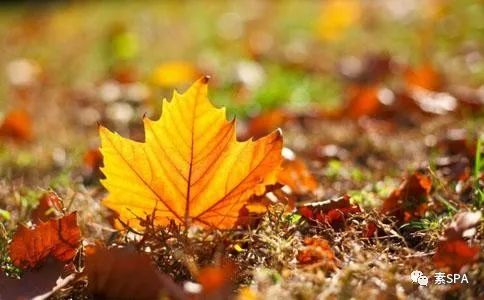
AUT
Yemeng Point: Regulating Water Pathways, Preventing Dryness Pathogen
The Yemeng point originates from the Ling Shu Jing, and is one of the commonly used acupoints of the Hand Shaoyang Sanjiao.
Yemeng, referring to liquid, in this context refers to the pathways of fluids;
Point, indicating the entrance and exit.
The Yemeng point is a Jing point of the Hand Shaoyang Sanjiao, effective in regulating water pathways. Massaging the Yemeng point can help clear heat, drain fire, and moisten the skin, preventing and treating the dryness pathogen. Stimulating the Yemeng point can also help clear the head, benefit the three jiao, and relieve pain.
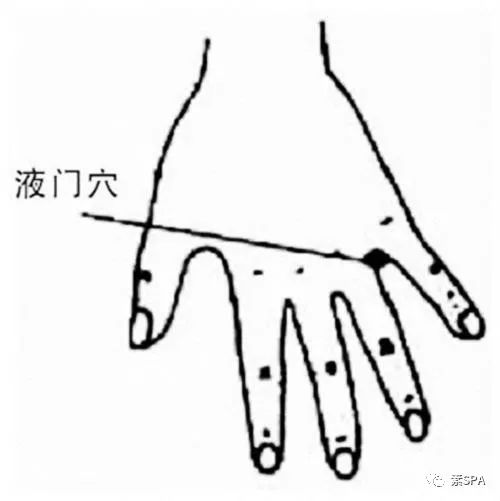
Stimulating the Yemeng point can be done by pressing it with the fingertip of the thumb 100 times. Care should be taken with the pressure, avoiding excessive force to prevent skin damage. Consistent daily massage can effectively prevent and treat headaches, tinnitus, and conditions such as cervical spondylosis and shoulder periarthritis. Moxibustion is also suitable for stimulating the Yemeng point, using moxa sticks to warm the point for 5-20 minutes until the local skin feels warm but without significant burning sensation, performed once daily, effectively alleviating symptoms such as red eyes, deafness, tinnitus, swollen gums, and forearm muscle spasms or pain.
Image source: Internet
Edited by: Su Spa
Recommended Reading:
Traditional Chinese Medicine: Cold Pathogen is a Harmful Knife
Traditional Chinese Medicine: Dampness Pathogen, the Source of All Illness.
Traditional Chinese Medicine: Understanding Heat Pathogen
Traditional Chinese Medicine: Wind Pathogen Causing Illness
